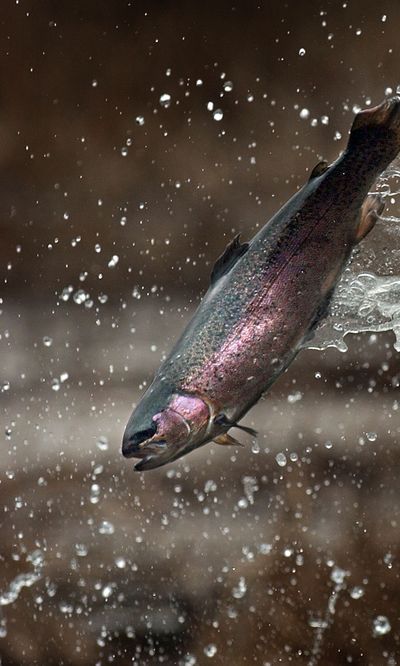WDFW drafts list of potential budget cuts

The Washington Department of Fish and Wildlife has drafted a list of more than $10 million in potential cuts for the 2015-17 budget cycle, including closing some trout hatcheries and at least one lower Columbia salmon hatchery and reducing ocean salmon fishing.
Other cuts could include eliminating five wildlife police positions and six wildlife program specialists.
The department has about 1,500 full-time positions.
The agency operates 83 fish hatcheries, almost 1 million acres of wildlife habitat and hunting areas and maintains 700 boat ramps and water access sites.
Fish and Wildlife operates on a two-year budget of about $375 million, much of it coming from the federal government and local funds, such as mitigation money from utility companies.
But two major revenue sources are the sport and commercial fishing and hunting license fees and support from the state’s general fund.
The proposed House budget leaves the agency $10 million short of current programs, while the Senate budget proposal has the department $10.5 million shy.
“Without additional revenue, both budgets would require us to reduce current recreational and commercial fishing opportunities, reduce our enforcement capacity, and restrict service delivery in other areas,’’ said Jim Unsworth, the agency’s new director.
“We are compelled to let lawmakers know what’s at risk if we are forced to make yet another round of cuts on top of the reductions we had to take during the recession.’’
The department faces three primary options for 2015-17:
•Reduce and eliminate programs by $10 million to $10.5 million.
•Receive $10 million to $10.5 million more in state general fund revenue.
•Generate $10.4 million by applying a two-year surcharge to fishing and hunting license fees.
The $10.4 million could be produced by a 13 percent surcharge applied to all fishing and hunting licenses or 22 percent to fishing licenses and 6 percent for hunting licenses.
According to department spokesman Bruce Botka, the 13 percent surcharge was calculated by the need to generate $10.4 million.
“The second option (22 percent fishing fee surcharge/6 percent on hunting fees) reflects that the funding gap is significantly greater in fishing-related programs,’’ Botka said.
Department administrators were in talks last week with legislative leaders who have indicated a willingness to consider these and other options for addressing the revenue shortfall, he said.
Raising license fees would be preferable to closing hatcheries, department officials say.
For example, the Naches Hatchery near Yakima is a bare-bones operation of two full-time positions that serves numerous lakes and the anglers that fish them.
“If we close Naches, you don’t have trout in the Yakima Valley. Simple as that,” said Chris Donley, the state’s Spokane-based inland fish program manager. “We’re not going to pick trout up in Western Washington and move them over there. I can’t provide enough trout in Western Washington as it is.”
More than three-quarters of Washington anglers fish annually for trout, according to state surveys of license holders. Nearly one-third prefer trout fishing to all other fishing.
For the Yakima area, the Naches Hatchery and its satellite Nelson Springs facility are all but irreplaceable. Combined, they annually supply 112,000 catchable-size trout, including 7,000 larger jumbos, to some 80 lakes, generating more than 500,000 angler trips.
The state would save about $180,000 a year by closing Naches. On the other hand, according to a 2004 state study on its hatchery programs, the Naches and Nelson Springs facilities’ annual economic impact was estimated at $73 million, from license and tackle sales to expenditures on fuel, food and lodging during fishing trips.
“We’re a revenue generator for this state. Economics are built around what we do,” Donley said. “While we would lose a lot with this, there are also a lot of private-industry jobs that would go away. You’re talking about losing something that impacts a lot of people beyond just the fishermen themselves. For a (fishing) tackle dealer, something like this is death by a thousand cuts.”
Closing a lower Columbia salmon hatchery is projected to save $914,000. No specific hatchery has been identified and will not until the Legislature approves the final budget.
Shortening ocean salmon fishing seasons would save $745,000 by eliminating the monitoring required to comply with permits and treaties.
Eliminating five wildlife police officers saves $1.49 million, while eliminating the wildlife specialist jobs would save $1.23 million. The Senate budget eliminates three additional wildlife police.
Closing additional hatchery facilities around the state could save another $1.15 million.
The license fee surcharges could be imposed through legislation that would remain in effect from July 1, 2015, through June 30, 2017.